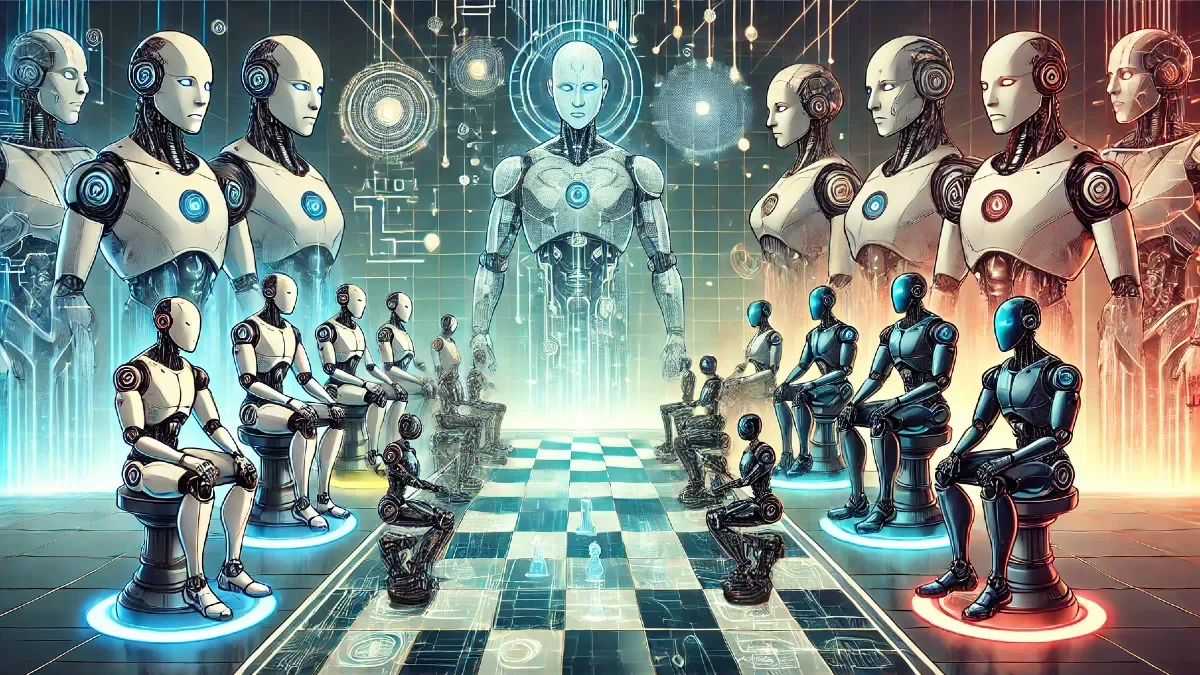Deepseek vs. the West: The Battle of the Supermodels
No, this isn’t a column about fashion models competing for the best selfie at the trendiest restaurant in your city—it’s even better. It’s about the rise of the major AI superstars throwing everything they’ve got into building the most advanced systems on the market. At the same time, new players like Deepseek have been quietly building their teams, products, and systems behind the scenes, spending just a fraction of what OpenAI, Google, Meta, and others are pouring into frontier models. So what’s going on?
Until recently, conventional wisdom said the best AI models would come from the companies with the most powerful chips—semiconductors. Of course, massive amounts of high-quality data and solid technical skill are still required to bring these systems to life. But building something on par with the American tech giants? That wasn’t supposed to be possible. Until it was. Don’t you hate when that happens?
A multi-billion dollar shock to the system
How big of a deal is this? NVIDIA lost 16% of its market value in the early hours of trading this Monday—that’s about $600 billion. Jensen Huang, NVIDIA’s founder and CEO, saw his personal net worth drop by more than $10 billion. The ripple effect is already being felt across the AI industry, especially in U.S.-based public companies exposed to the AI ecosystem. This is a Sputnik Moment for AI—things are about to move very fast. So yes, it’s a big deal.
Deepseek, a mysterious Chinese AI company that shares very little about what it does, who works there, or how they pulled this off, has fundamentally shifted the conversation around the AI supermodel race with the launch of its R1 model. What we do know is that it spun out of High-Flyer, a Chinese hedge fund founded by Liang Wenfeng, a co-founder of the quant firm. Their focus is on developing artificial general intelligence (AGI). If that term is new to you, no worries—I’ve got a full series on AGI coming up where I’ll break it down in detail.
There’s a lot to unpack, so here are the key developments that are reshaping the global AI landscape—not just for the U.S. and China, but for other players around the world trying to compete at a high level.
More AI for less
First, Deepseek managed to build a model that, in many cases, scores on par with OpenAI’s latest releases—but at a fraction of the cost and in much less time. How much less? While OpenAI and others are spending upwards of $80 million to train their models, Deepseek pulled it off for around $6 million. Ouch. That’s like buying your dream car, only to see it go on sale the next day for 80% off. Worse yet, your overly competitive neighbor bought it too—at the discount.
Another major milestone is that Deepseek demonstrated that you can train a cutting-edge model using less advanced chips. This was previously seen as a major roadblock. If you remember, about a month ago I wrote about the geopolitics of semiconductors and rare earths, and how the U.S. and China are locked in a kind of tech food fight, each trying to block the other from getting ahead. Well, the food fight just escalated—China just threw two handfuls of chips and models while the U.S. was still reaching for the salt.
This raises a big question: what happens if these models get access to even more powerful computing? We could be looking at a future where Chinese companies not only catch up, but possibly take the lead in the global AI race—faster than anyone expected.
These breakthroughs show that even strict limits on semiconductors, rare earths, and other trade tools might not be enough to stop a major player from pulling ahead with the right strategy.
There have been rumors in recent weeks that Deepseek may have gotten its hands on advanced chips but is keeping quiet to avoid scrutiny over evading trade restrictions. Whether that’s true or not, the accomplishment stands. If they used restricted chips, they’ve caught up. If they used lower-power chips like they say, they’ve out-innovated many global players. Either way, this is absolutely a Sputnik Moment—time to wake up.
And here’s another twist, Deepseek’s models are open source. That means anyone—including you—can access them. Not like OpenAI’s closed models, which are tightly guarded. This move opens the door for AI firms across the globe to build on what Deepseek has released. After nearly a decade in the AI industry, I can say this is one of the most exciting moments I’ve seen. I can’t wait to see what people do with it—and where it takes us next.
How to ride the AI wave (without getting wiped out)
So, what should you take away from all this? Here are three suggestions you might want to consider:
2025 is shaping up to be an extremely fast-paced year in AI and business. Keep an eye on the startups in your industry using these models.
If you haven’t started working on your AI strategy yet… maybe it’s time?
The barriers to entering the advanced AI space are dropping. That doesn’t mean it’s going to be easy, but I can guarantee at least one major player in your industry is going to start taking AI seriously this year. Shouldn’t that be you?
It really is an incredible time to be alive, to build, and to have access to these systems to create the next generation of companies and services. If you’ve been waiting for a sign to do something in tech, this might just be it. After all, AI supermodels are on sale.
Originally published in Spanish for Fast Company Mexico:
https://fastcompany.mx/2025/01/27/deepseek-batalla-occidente-supermodelos-ia/

